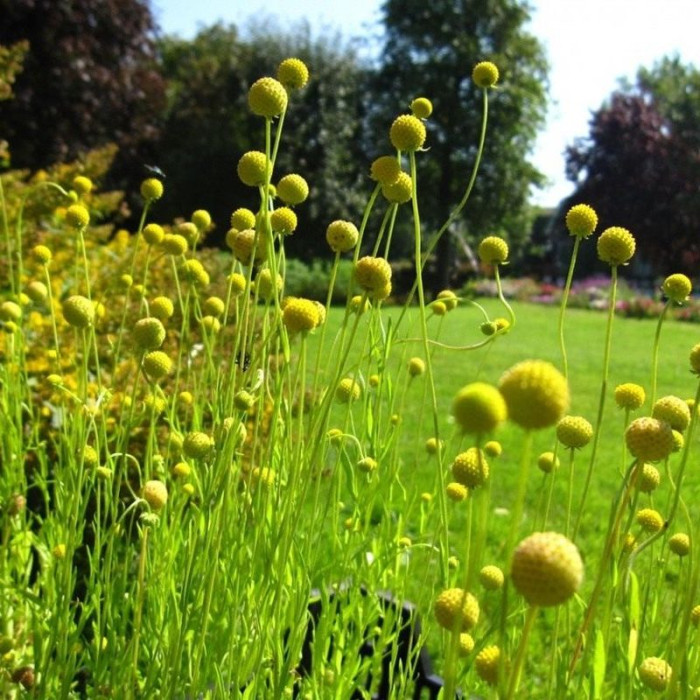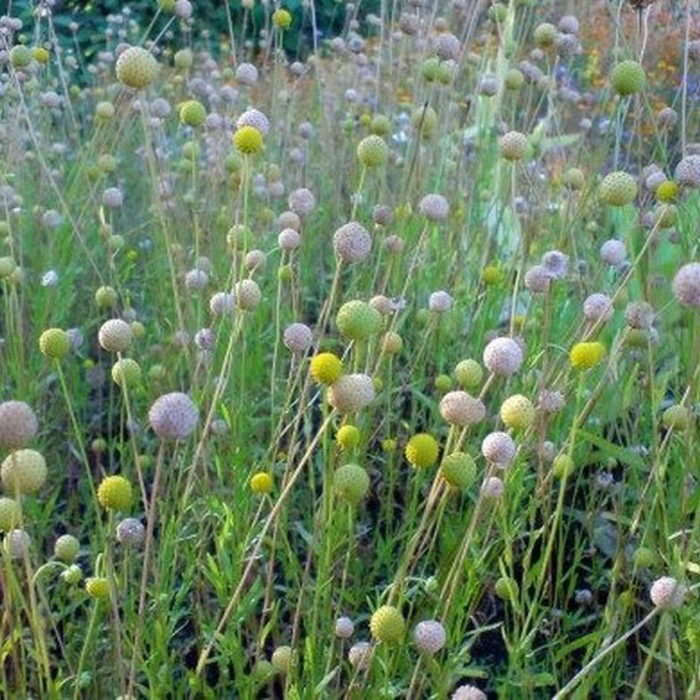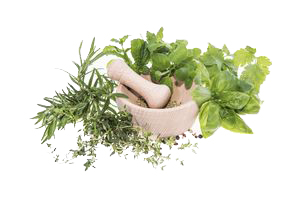Aromatic gelenium (Helenium aromaticum) or aromatic Cephalophora (Cephalophora aromatica) or strawberry grass - an annual 40-60 cm high with numerous dark green narrow leaves without petioles. Each cephalophora stalk carries an inflorescence at the top in the form of small yellow balls 8-15 mm in diameter, ideally rounded.
The surface of the cephalophora inflorescence is dotted with tiny cells resembling a honeycomb. Each of them is a flower, and thus several hundred achenes are placed in the inflorescence.
An adult cephalophora has the appearance of a spherical, dense, bright green bush. The root of this plant is taproot, deep into the soil, strongly branched almost from the very base.
Cephalophora is grown as a spicy, essential oil and ornamental plant. The cephalophora is especially spectacular during flowering, when its dense bush is covered with numerous rounded bright yellow inflorescences. The flowering time of the plant is more than two months.
Cephalophora flower heads are an excellent dried flower: they do not crumble with any drying methods and retain their decorative effect for a long time, which is important for winter bouquets.
All above-ground parts of fragrant cephalophora (including seeds) have a pleasant aroma of fresh strawberries. Fragrant essential oil is found mainly in the inflorescences of cephalophora. And also this beautiful and useful plant is rich in vitamins ("C", "B1", "B2") and trace elements.
Cephalophora does not require a lot of raw materials, since it is used in microdoses. Therefore, only 2-3 plants that fit in an area of less than 1 sq.m. can provide a family with fragrant raw materials for a year or two ahead.
Cultivation of cephalophora
Growing a cephalophore is easy. This plant is hardy and drought tolerant. But it is very light-loving and requires space.
With the absolute undemandingness of the cephalophora to soils, on light fertile and moisture-provided lands, its bushes look much more magnificent and more beautiful.
Cephalophora seeds are quite small. And although they can be planted both in open ground and in planting containers, it is still better to use the seedling method and not risk it.
The seeding depth is half a centimeter. They begin to germinate at a temperature of about 8 degrees. Moreover, the higher the temperature, the faster the seeds will germinate. You can grow them on the south window, covering the planting container with a bag and periodically airing it. Another effective technique: immediately after planting, pour the container with a biostimulator. Seeds will sprout much faster and more amicably, and seedlings will be stronger.
Cephalophora grows well on light, fertile, moderately moist soils. She is not afraid of light penumbra, although this is a fairly light-loving plant. It is quite drought-resistant and not capricious. Watering on dry days and periodic feeding with growth stimulants is all that is needed for this plant to settle in your country house and feel great.
Cephalophora easily forms its seeds. Therefore, it is enough to acquire it once in order to never part again.
Cephalophora blooms massively in June-July, with each inflorescence blooming for more than a month. First, small green rounded heads appear at the top of each stalk, which, as they grow, turn into beautiful yellow balls. This serves as a harvest signal.
Mow plants at a height of 10-15 cm from the soil surface, harvest cephalophora inflorescences, leaves and stems. Shoots should be cut in clear sunny weather in the morning, as soon as the dew has come down - it is then that the flowering plant contains the maximum amount of fragrant essential oil.
Dry the harvested cephalophora grass as a whole (hanging the cut shoots in a ventilated, warm place protected from the sun) until the stems are brittle.
Dried cephalophore is usually crushed and stored in paper bags. At the same time, dry leaves and inflorescences of cephalophora are best stored separately, since the leaves contain bitterness.
With timely harvesting of cephalophore grass at the time of mass flowering, partially cut shoots will soon grow back, and then a second cut can be made.
Reproduction of cephalophora
Cephalophora seeds ripen in large quantities, their germination capacity lasts 4-5 years. Therefore, you can use the stock of your own seeds for a long time.
Periodically, if necessary, I do not cut one of the plants, leaving it for seeds; they ripen in August-September.
Seed propagation of cephalophora is not difficult - despite the fact that the seeds are very small. They can be sown directly in open ground (around mid-May), planting to a depth of 0.5-1 cm.
Cephalophora seeds begin to germinate 5-7 days after sowing, already at a temperature of 6-8°C. Higher temperatures speed up germination.
Please note that gentle cephalophore seedlings do not tolerate strong return frosts, and cold snaps are no longer afraid of grown plants.
If the seedlings have risen densely in the garden, I thin them out, leaving 30-40 cm between the plants. With a closer planting, the plants close and their shoots intertwine. This reduces the decorative effect and complicates the cutting of flowers, the cleaning of raw materials for drying.
In the northern regions (or if there are few seeds), you can sow cephalophore seeds at home or in a greenhouse in early May by growing seedlings. Fortified plants about a month old are planted with a clod of earth in a permanent place in open ground.
The use of cephalophora in medicine and cooking
Strawberry grass is a piquant spice with medicinal properties. Fragrant Cephalophora has a beneficial effect on metabolism and strengthens blood vessels, so the herb is included in the composition of therapeutic balms. Hydroalcoholic extract of cephalophora is active against staphylococcus aureus.
In Western countries, cephalophora is widely used in perfumery, as well as in cooking to give various dishes a subtle pineapple-strawberry flavor.
Dried Cephalophora grass is used in the production of soft drinks and for flavoring alcohol (wine, vermouth, liqueurs). Cephalophora essential oil also flavors vinegar, confectionery, cocktails, and processed cheeses.
At home, cephalophora grass is used as a strong flavoring agent, adding it little by little to regular tea or herbal teas. And also cephalophore, when applied in microdoses, improves the taste and smell of marinades, sauces, homemade wines, pastries. The main thing at the same time is not to overdo it with the amount of cephalophore added: its excess gives a strong sugary aftertaste, drowning out the tastes and aromas of other products, and when added in large quantities, the grass is bitter.

No questions about this product, be the first and ask your question.











